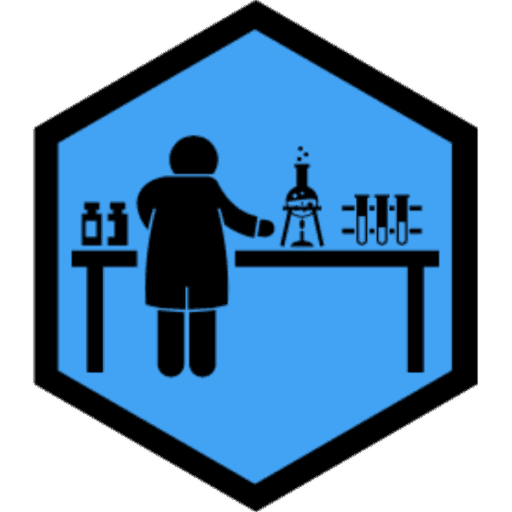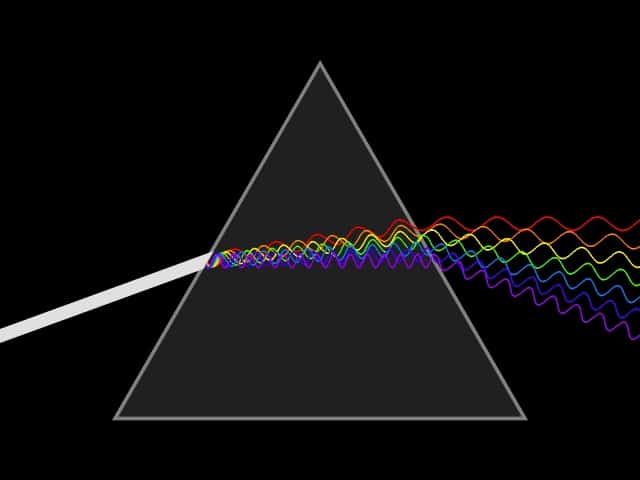What happens when light goes through a prism? This is a great experiment demonstrating optical phenomenons like light dispersion, as well as the refraction of light through prism. High-quality glass prisms are not only great for teaching physics. They can also used for prism photography! Let’s now see how to use a prism to make a rainbow!
Table of Contents
What is light refraction?
In physics, light refraction is defined as an optical phenomenon by which the light is diverted when it penetrates another substance. For example, refraction occurs when a beam of light travels through the air before reaching the polished surface of a glass prism. In this example, the glass has a specific refractive index, which will determine the angle of the light deviation. Furthermore, the incidence angle of the light hitting the surface of the prism will also influence how the light is deviated.
What is light dispersion and how to use a prism to make a rainbow?
In addition to light refraction, another optical phenomenon is taking place within the prism. For instance, the prism experiment also demonstrate how light dispersion can happen. In short, the scientific principle behind it is that the refractive index of the prism depends on the wavelength of the light penetrating it. Therefore, if a beam of white light hits the prism, the various wavelengths corresponding to the full spectrum of colors composing the white beam will each be deviated at a specific angle. In other words, the white light will be separated into a colorful rainbow! This optical phenomenon is similar to the rainbows that you can see in the sky, in which water droplets are refracting the sunlight.
Check this Prism Ideal for Teaching Light Spectrum on Amazon
What is the relationship between color and wavelength for light?
The visible light spectrum is composed of several colors, each of them corresponding to a specific wavelength. Indeed, the human eye can perceive wavelengths ranging approximately from 390 to 700 nm. This range of wavelengths corresponds to the following colors, in this order:
Violet – Blue – Cyan – Green – Yellow – Orange – Red
On the other hand, the human eye will not see wavelengths outside the visible light spectrum. For instance, ultraviolet radiations are emitted at wavelengths below 390 nm and can’t be seen. This is also the reason why we can’t see infrared emissions at longer wavelengths.
How did newton prove that sunlight consists of many colors?
Looking at light through a prism is an idea that has been around for a long time. Indeed, both Descartes and Newton studied this optical phenomenon. In 1666, Newton enthusiastically wrote this in a letter:
“I procured me a Triangular glass prism, to try therewith the celebrated Phœnomena of Colours… It was at first a very pleasant divertissement to view the vivid and intense colours produced”1.
During his career, Newton performed several experiments with prisms to study light refraction and dispersion. In one of his famous experiments, he cut a pinhole in is window shade to only allow the passage of a beam of sunlight. Using a glass prism, he demonstrated that the beam of light was refracted and changed its path, as he observed that its projection on a surface was diverted by the prism. He also noticed another optical phenomenon: light dispersion into a rainbow of colors! Using a second prism, he further proved that these various colors can be combined again to obtain white. As a result, he was able to prove that sunlight in fact consists of many colors.
Refraction of light through prism experiment
Now you may be as thrilled as Newton to experiment light refraction and dispersion through a prism. You can easily find a small glass prism that will allow you to demonstrate the basic principles of physic optics. First, you can try to project the light beam towards a wall or other flat surface. You can also try different incidence angles and see how it affects the light emitted.
How to use a prism for photography?
There are many references to light refraction and dispersion in popular culture. Among the most iconic representation of this optical phenomenon is the cover of the album Dark side of the Moon by Pink Floyd.
Light refraction can also be used in photography. There are mainly two ways to use a prism. First, it can be employed to create a rainbow effect that can be incorporated within the picture. Some photographers also put a triangular glass prism in front of the objective to create a nice optical illusion. By doing this and by changing the angle of the prism, it is possible to capture a scene located in front of the objective while simultaneously incorporating elements perpendicular to the camera.
Click here to see where to buy a glass prism that can be used for photography
I hope you enjoyed reading this post about light refraction and dispersion through a prism. Before leaving, don’t forget to also have a look at my previous posts to learn about the camera obscura effect or the science behind optical microscopes.
References
1- https://royalsocietypublishing.org/doi/10.1098/rstl.1671.0072
2- https://en.wikipedia.org/wiki/Prism

